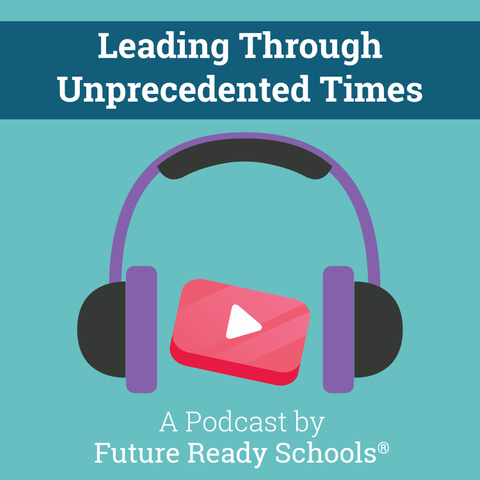Collaborative Leadership
![]()
Collaborative leadership for future ready learning requires leaders at all levels apply equity-focused innovative approaches. Future ready leaders are empowered to think and act with innovation in mind, with the willingness to embrace curricular and instructional enhancements as learning needs evolve and culture demands. They must believe in the district’s shared, forward-thinking vision for learner-centered instruction through effective and intentional uses of innovative learning practices, tools, technologies, and resources, while ensuring equity in access and opportunity for all students. Critical to success is active demonstration of a culture of innovation whereby trust fuels the capacity of students, teachers, administrators, caregivers, and community to work in collaborative support of that vision. The resulting foundational policies reflect the coherency, consistency, and accountability required to prepare learners to thrive in today’s issue-driven, globally, and digitally connected workforce and society.
A Shared, Forward-Thinking Vision for Teaching and Learning
Recognizing that today’s students communicate, create, and seek education through connected devices and technology-based programs, schools must be proactive, adaptive, and inclusive of technology where appropriate. A learning environment that engages students in evidence-based practices and pedagogies, alongside intentional use of interactive tools, is essential to prepare students to thrive in today’s fast-paced society. Additionally, districts must engage students, teachers, administrators, caregivers, stakeholders, and the community as trusted partners in the process of learning. From identifying goals and envisioning outcomes to implementing a district’s future ready initiative, collaborative leaders personalize learning for all through the effective uses of technology, communicating how effective teaching and learning practices look and feel as learners acquire, practice, and master these essential skills.
A Culture of Collaboration, Innovation, Capacity Building, and Empowerment
Future ready leadership nurtures and cultivates a collaborative culture in which leaders at all levels along with stakeholders are empowered to innovate. Capacity is maximized when trust, transparency, risk-taking, and respect are consistently modeled. Future ready leaders hold themselves to high expectations, demonstrating the flexibility, agility, and adaptability necessary to support, inspire, and assure an inclusive and dynamic team. Future ready leaders recruit and garner stakeholder support, creating reciprocal and dynamic partnerships steeped in trust and value. Core to sustainability, an innovative and empowered culture is informed by research, measured by student outcome data, and facilitated by competent, compassionate, future ready leaders.
High Expectations for Evidence-Based Transformations to Teaching and Learning
Regardless of role, teachers, administrators, and students are challenged to show progress toward the district vision. The district establishes metrics to gauge such progress, actively monitors efforts, and incorporates positive, yet critical, feedback throughout the process. Frequent cultivation and evaluation of multisourced evidence ensures that instructional resources and technologies are implemented in ways that advance the vision. Consistent and transparent communication with stakeholders demonstrates and solidifies trust and supports the adoption of innovative approaches.
Transformative, Coherent Thinking Via the Future Ready Process
A forward-thinking, future ready vision is advanced through leaders’ transformative thinking and collaborative endeavors. Future ready leaders ensure that district policies are coherent and parallel the underpinning philosophy of the vision (e.g., personalizing professional learning for educators, just as they personalize learning for students). They work collaboratively to develop strategic plans with input from a variety of stakeholders, map potential pathways to the future, and create tactical and financial plans with an appropriate budget for implementation. As active participants and leaders of implementation, they monitor, adjust, build capacity, and iterate for continuous improvement.
Featured Resource
[Podcast] Leading Through Unprecedented Times
This podcast highlights school and district leaders, who reflect on lessons learned during the global pandemic and the challenges that they face with reopening for the new school year.
Implementation Guide
Consistent and Ongoing Communications
The effective use of technology provides tools, resources, data, and supportive systems that increase opportunities for teaching and learning.
